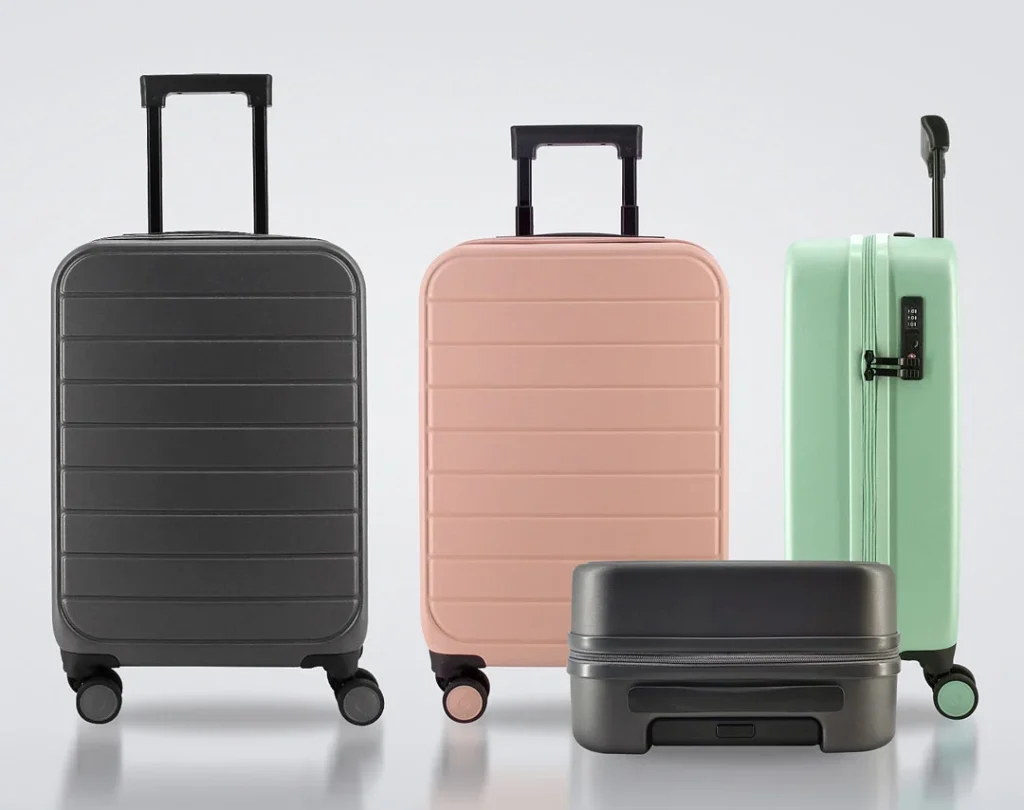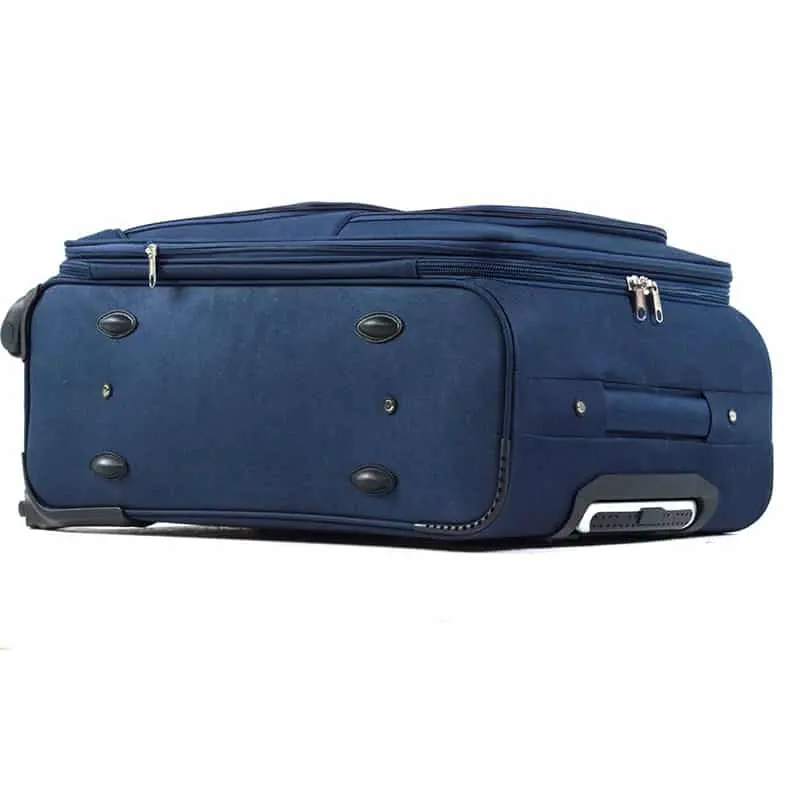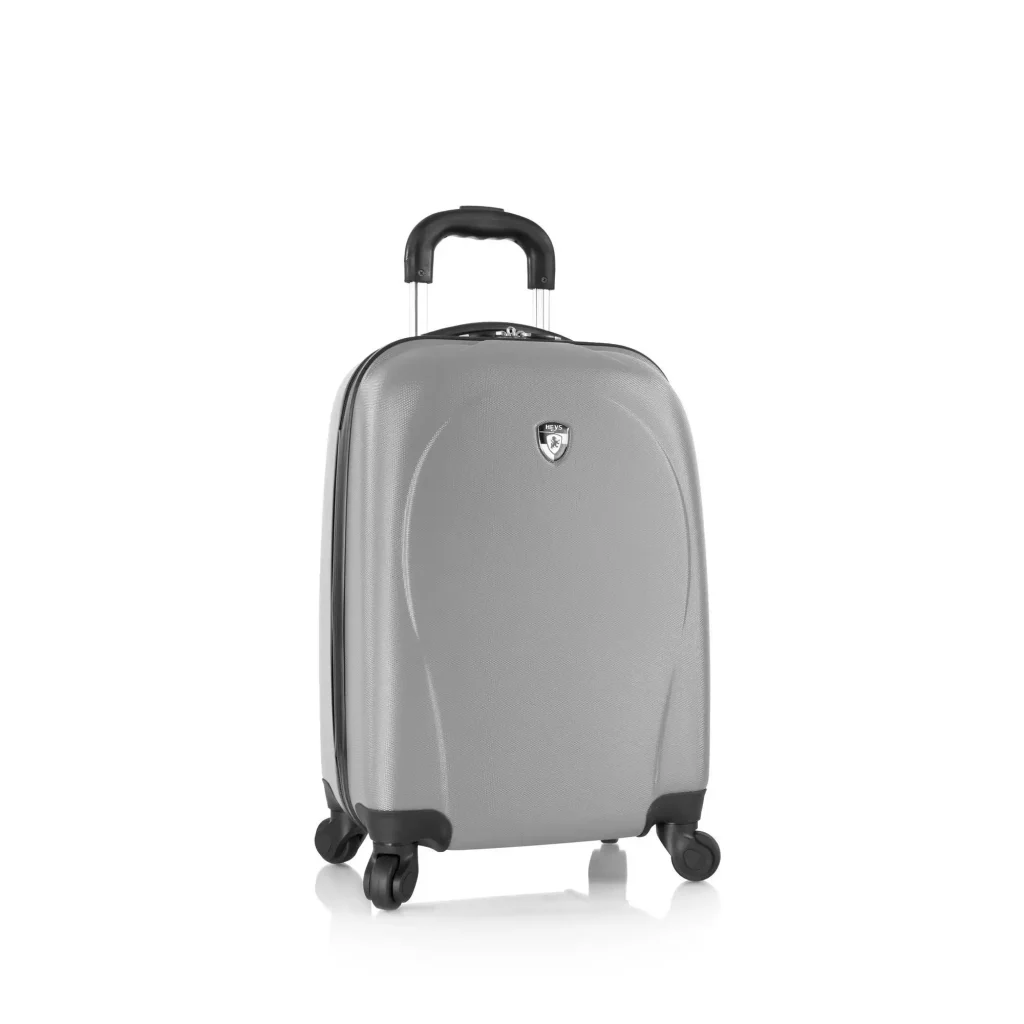For a hassle-free travel experience, picking the proper luggage material is essential. Your luggage’s durability, weight, aesthetic, and general functionality are all impacted by its material. Choosing which material is appropriate for your needs might be overwhelming with so many possibilities on the market. This article strives to offer a thorough overview of the finest materials for baggage, encompassing elements like toughness, weight, style, and compatibility for various types of travel.

Factors to Consider When Choosing Luggage Material
耐久性
Durability is a key factor to consider when selecting luggage. You want your luggage to withstand the rigors of travel and protect your belongings. Different materials offer varying levels of durability. For example, ABS (Acrylonitrile Butadiene Styrene) is known for its impact resistance, while polycarbonate is highly durable and can withstand rough handling. It’s important to evaluate the durability of different materials based on your travel needs.

重量
The weight of your luggage plays a significant role in your overall travel experience. Heavy luggage can be cumbersome and may lead to additional fees at airports. Lightweight materials such as polycarbonate and certain nylon blends offer the advantage of reducing the overall weight of your luggage while still providing sufficient durability. It’s essential to strike a balance between durability and weight to ensure ease of travel.

Style and Appearance
While functionality is a priority, many travelers also value the style and appearance of their luggage. Different materials can significantly impact the aesthetics of your luggage. For instance, aluminum often exudes a sleek and modern look, while leather gives a classic and sophisticated vibe. It’s important to consider your personal style preferences and fashion trends when selecting the material of your luggage.
Common Luggage Materials
Acryliconitrile Butadiene Styrene, or ABS
ABS is a popular material for baggage due to its toughness and resistance to effect. It is suitable for frequent travelers because it is lightweight and durable. ABS might not be as elastic as other materials, though, and it might deteriorate with time.

Polycarbonate
Premium luggage is made of the very elastic and impact-resistant material polycarbonate. It has a excellent strength to weight ratio, making it both light and durable. For travelers who want to prioritize durability without sacrificing weight, polycarbonate baggage is great.

アルミニウム
Aluminum luggage is renowned for its durability and high-end appearance. It provides excellent protection for your belongings and can withstand rough handling. However, aluminum luggage tends to be heavier compared to other materials, which may be a consideration for those concerned about weight. By the way, the excellent luggage material is 6000シリーズアルミ合金. While the most suitable luggage material is 6061アルミニウム合金 among them. It has great durability and high-end appearance. Its metallic finish can be polished, anodized, or coated, allowing for various design options and color choices. This aesthetic appeal enhances the overall appearance of the luggage and can make it more visually appealing to consumers.
What’a more, aluminum has excellent resistance to corrosion, particularly when exposed to air. This property is beneficial for luggage because it helps protect the luggage from rusting, which can be an issue with certain metals. Corrosion resistance ensures that the luggage maintains its appearance and structural integrity over time, even when exposed to different weather conditions or environments.
Additionally, aluminum is highly recyclable, making it an environmentally friendly choice for luggage manufacturers. It can be melted down and reused to create new aluminum products, reducing the demand for extracting and processing raw materials. This recyclability aligns with sustainability goals and reduces the environmental impact of luggage production.

Nylon
Nylon is a versatile and lightweight material commonly used in soft-sided luggage. It is known for its flexibility, resistance to abrasion, and water repellency. Nylon luggage is suitable for various types of travel, including business trips and casual vacations. However, it may not offer the same level of impact resistance as hard-sided luggage materials.

Specialized Luggage Materials
Ballistic Nylon
Ballistic nylon is a heavyweight and highly durable material initially developed for military applications. It offers exceptional resistance to tears and abrasion, making it ideal for travelers who require rugged and long-lasting luggage. However, ballistic nylon luggage may be heavier compared to other materials.

Leather
Leather is a luxurious and timeless material often associated with high-quality luggage. It offers a sophisticated and elegant appearance. Leather luggage is suitable for business travelers or those who prioritize style. However, leather requires special care and maintenance to prevent damage.

Polycarbonate Composite
Polycarbonate composite is a variation of polycarbonate that incorporates other materials such as ABS or polypropylene. It offers a balance between durability and affordability. Polycarbonate composite luggage is often lightweight, durable, and more budget-friendly compared to pure polycarbonate options. It is suitable for a wide range of travel needs.

Comparison and Evaluation of Luggage Materials
耐久性
Polycarbonate and aluminum are considered some of the most durable options, when comparing the durability of different luggage materials, polycarbonate and aluminum are considered some of the most durable options. They can withstand impact and rough handling better than ABS or nylon. Real-world examples and customer reviews can provide valuable insights into the long-term durability of various luggage materials.
重量
Weight is a critical consideration for travelers, as heavy luggage can be inconvenient and may incur additional fees at airports. Lightweight materials such as polycarbonate and certain nylon blends are favored for their ability to reduce the overall weight of luggage while still providing sufficient durability. Evaluating materials based on weight can ensure ease of travel.
コスト
The cost of luggage materials varies, with aluminum and leather generally being more expensive options. ABS and nylon tend to be more budget-friendly, while polycarbonate falls in the mid-range. It’s important to consider the value for money when selecting luggage materials, taking into account factors such as durability, functionality, and personal preferences.
Style and Appearance
Luggage materials can significantly impact the aesthetics and style of your luggage. Aluminum luggage often exudes a sleek and modern look, while leather provides a classic and sophisticated vibe. Personal preferences and fashion trends play a role in selecting the material that aligns with your style and enhances your travel experience.

Best Luggage Materials for Different Travel Needs
Business Travel
For business travelers, durability, style, and functionality are key considerations. Polycarbonate or aluminum luggage with sleek designs and organizational features are often preferred. Wheels and handles that withstand frequent use are also important factors to consider.
Adventure Travel
Adventure travelers require luggage that can withstand rugged conditions. Materials like polycarbonate, ABS, or ballistic nylon are suitable due to their durability and resistance to impact and abrasion. Water resistance and additional features such as reinforced corners or compression straps are also beneficial for adventure travel.
Family Travel
Family travel often involves multiple pieces of luggage and can be subject to rough handling. Materials like polycarbonate, ABS, or nylon offer durability and resistance to wear and tear. Additionally, choosing luggage with ample storage space and easy maneuverability can make family travel more convenient.
Care and Maintenance of Luggage
Proper care and maintenance can prolong the lifespan of your luggage. General tips include avoiding overpacking, cleaning your luggage regularly, and storing it in a dry place when not in use. Cleaning instructions may vary depending on the material, so it’s essential to follow manufacturer guidelines. Understanding repair and warranty information is crucial should any damage occur or if you need to address any issues with your luggage.
In conclusion, choosing the right luggage material is necessary for a pleasant and stress-free travel experience. Factors such as durability, weight, style, and suitability for different types of travel should be considered when choosing luggage. By understanding the characteristics and pros and cons of many kinds of materials, you can make an wise decision in accordance with your travel needs and preferences. Remember to prioritize durability, functionality, and personal style when selecting your luggage material.


